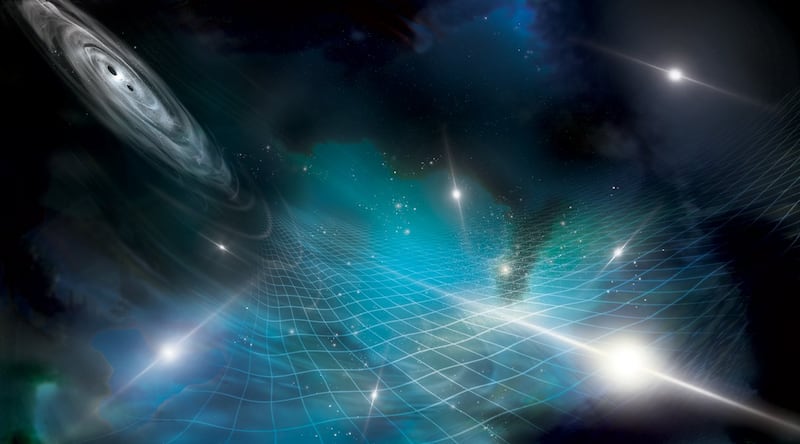Scientists have found evidence that the universe has a background hum, or ripples in the fabric of space-time called gravitational waves.
These were first proposed by Albert Einstein in 1916 but were not detected until about 100 years later.
Now, the waves echoing through the universe have been recorded for the first time in the form of radio data, it was announced on Wednesday.
Researchers from the North American Nanohertz Observatory for Gravitational Waves (NanoGrav) spent 15 years collecting data from ground-based telescopes, with findings now published in the Astrophysical Journal Letters.
"In the new studies, NanoGrav is thought to have picked up a collective hum of gravitational waves from many pairs of merging supermassive black holes throughout the universe," said Caltech University, which is a part of the observatory.
NanoGrav scientists monitored 68 dead stars, called pulsars, that acted like a network of signals filled with gravitational waves.
The motion of black holes and other massive objects through space creates ripples in the fabric of the universe.
The gravitational waves are thought to have been created over eons by supermassive black holes – which are up to billions of times the mass of the Sun – circling each other before they merge.
"The effect of the gravitational waves on the pulsars is extremely weak and hard to detect, but we built confidence in the findings over time as we collected more data," Katerina Chatziioannou, a NanoGrav team member and an assistant professor of physics at Caltech University, said.
"People have tried to find merging supermassive black holes with telescopes for years.
"They are getting closer and finding more candidates, but because the black holes are so close together, they are hard to distinguish.
"Having gravitational waves as a new tool will help better understand these enigmatic beasts."
Nasa said in a statement that detecting gravitational wave background could be compared with hearing the hum of a large group of people talking at a party, without distinguishing any particular voice.
It said that the findings could help scientists learn how the waves are created and what happens as they echo through the universe.
"They could also be used to study supermassive black hole mergers, events that can last for millions of years. Scientists think these mergers happen in most galaxies and influence their evolution," Nasa said.
The Laser Interferometer Gravitational Observatory made the first ever detection of gravitational waves in 2015.
But they were at a much shorter wavelength than the new discovery, meaning they were detected from black holes that were only about 30 times the mass of the Sun.






